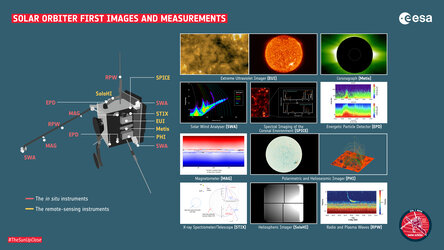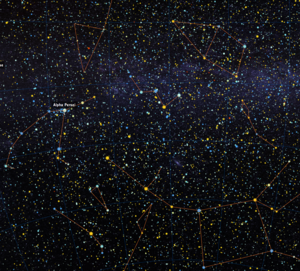Accept all cookies Accept only essential cookies See our Cookie Notice

About ESA
The European Space Agency (ESA) is Europe’s gateway to space. Its mission is to shape the development of Europe’s space capability and ensure that investment in space continues to deliver benefits to the citizens of Europe and the world.
Highlights
ESA - United space in Europe
This is ESA ESA facts Member States & Cooperating States Funding Director General Top management For Member State Delegations European vision European Space Policy ESA & EU Space Councils Responsibility & Sustainability Annual Report Calendar of meetings Corporate newsEstablishments & sites
ESA Headquarters ESA ESTEC ESA ESOC ESA ESRIN ESA EAC ESA ESAC Europe's Spaceport ESA ESEC ESA ECSAT Brussels Office Washington OfficeWorking with ESA
Business with ESA ESA Commercialisation Gateway Law at ESA Careers Cyber resilience at ESA IT at ESA Newsroom Partnerships Merchandising Licence Education Open Space Innovation Platform Integrity and Reporting Administrative Tribunal Health and SafetyMore about ESA
History ESA Historical Archives Exhibitions Publications Art & Culture ESA Merchandise Kids Diversity ESA Brand CentreLatest
Space in Member States
Find out more about space activities in our 23 Member States, and understand how ESA works together with their national agencies, institutions and organisations.
Science & Exploration
Exploring our Solar System and unlocking the secrets of the Universe
Go to topicAstronauts
Missions
Juice Euclid Webb Solar Orbiter BepiColombo Gaia ExoMars Cheops Exoplanet missions More missionsActivities
International Space Station Orion service module Gateway Concordia Caves & Pangaea BenefitsLatest
Space Safety
Protecting life and infrastructure on Earth and in orbit
Go to topicAsteroids
Asteroids and Planetary Defence Asteroid danger explained Flyeye telescope: asteroid detection Hera mission: asteroid deflection Near-Earth Object Coordination CentreSpace junk
About space debris Space debris by the numbers Space Environment Report In space refuelling, refurbishing and removingSafety from space
Clean Space ecodesign Zero Debris Technologies Space for Earth Supporting Sustainable DevelopmentLatest
Applications
Using space to benefit citizens and meet future challenges on Earth
Go to topicObserving the Earth
Observing the Earth Future EO Copernicus Meteorology Space for our climate Satellite missionsCommercialisation
ESA Commercialisation Gateway Open Space Innovation Platform Business Incubation ESA Space SolutionsLatest
Enabling & Support
Making space accessible and developing the technologies for the future
Go to topicBuilding missions
Space Engineering and Technology Test centre Laboratories Concurrent Design Facility Preparing for the future Shaping the Future Discovery and Preparation Advanced Concepts TeamSpace transportation
Space Transportation Ariane Vega Space Rider Future space transportation Boost! Europe's Spaceport Launches from Europe's Spaceport from 2012Latest

‘Listening’ in for energetic electrons with Solar Orbiter
Thank you for liking
You have already liked this page, you can only like it once!
The Sun is a very efficient particle accelerator. During solar flares, bursts of high-energy particles can be injected into interplanetary space. The Earth’s magnetic field and atmosphere protects us from most of the possible harmful effects of these particles. However, when it comes to future astronaut missions to interplanetary space, this protection becomes less effective and a prediction of these solar events becomes important.
Solar Orbiter’s Radio & Plasma Waves (RPW) instrument listens for the radio emission that the energetic electrons create. The energetic electrons create a perturbation of the solar wind that results in a Solar Type III radio burst.
This figure shows the first Type III burst observed by RPW. It took place on 6 May 2020, when Solar Orbiter was at roughly half the Earth’s orbital radius from the Sun. The burst starts at approximately 09:33 UT, when the accelerated electrons were still in the Sun’s outer atmosphere, known as the corona. It stops being visible at around 09:47 UT, by which time the electrons have reached a distance of around 40 solar radii.
Usually such detections are made by instruments that detect the electrons as they flow past the spacecraft. For example, the sister instrument EPD does this on Solar Orbiter. The radio technique used by RPW complements these abilities because it allows the detection of all solar electron events, even those not passing directly past the spacecraft.
Solar Orbiter is a space mission of international collaboration between ESA and NASA.
-
CREDIT
ESA & NASA/Solar Orbiter/RPW Team -
LICENCE
ESA Standard Licence

Listen to the Sun’s own radio station

Joining the dots of an energetic particle event

Solar Orbiter first images and measurements

Detecting a solar energetic particle event with Sola…















 Germany
Germany
 Austria
Austria
 Belgium
Belgium
 Denmark
Denmark
 Spain
Spain
 Estonia
Estonia
 Finland
Finland
 France
France
 Greece
Greece
 Hungary
Hungary
 Ireland
Ireland
 Italy
Italy
 Luxembourg
Luxembourg
 Norway
Norway
 The Netherlands
The Netherlands
 Poland
Poland
 Portugal
Portugal
 Czechia
Czechia
 Romania
Romania
 United Kingdom
United Kingdom
 Slovenia
Slovenia
 Sweden
Sweden
 Switzerland
Switzerland
























